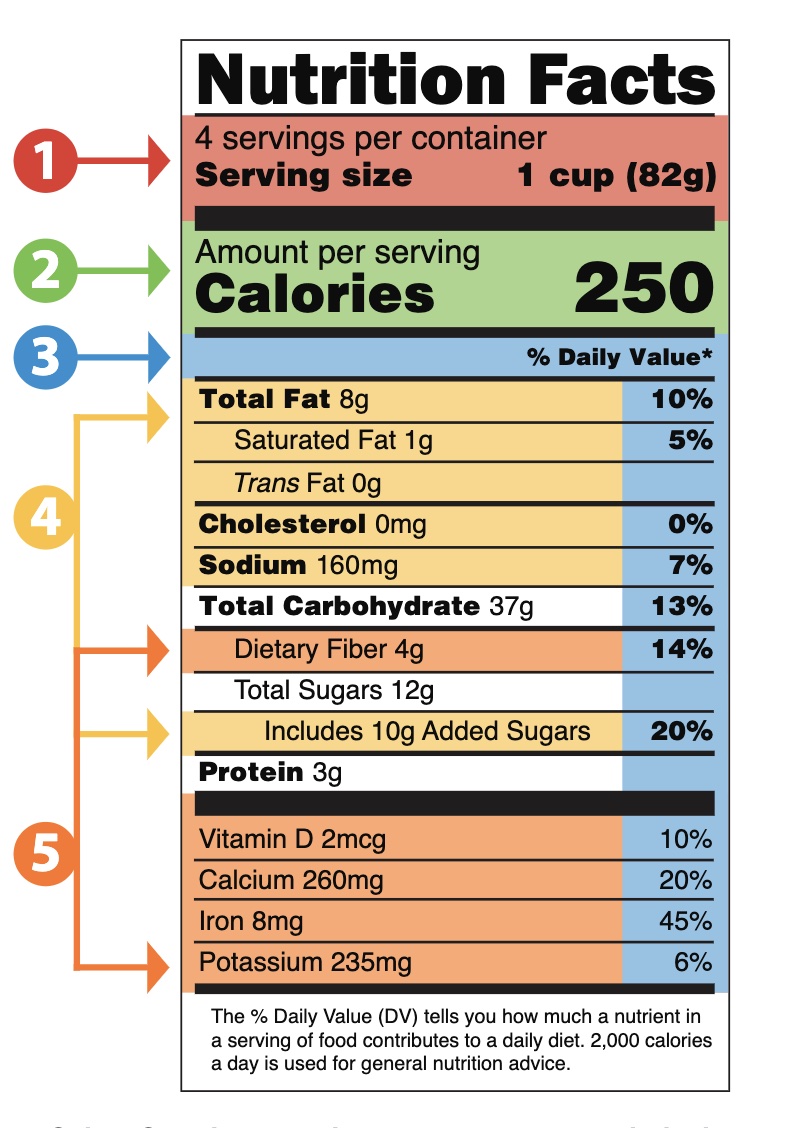Reading and understanding the Nutrition Facts Label can help you make smart food choices when shopping. Here are 5 crucial steps when reading a nutrition label.
1. UNDERSTAND the Serving Size
Serving size is equivalent to saying “portion” or “helping.” The information listed on the Nutrition Facts label is based on a typical serving in common measurements like cups, ounces, or pieces. 
Be sure to look at the number of servings in the container. Even small containers may have more than one serving. If you eat more or less than the serving listed, you must multiply or divide the nutritional values by the number of servings you eat.
For example, if you take 3 serving sizes of something, multiply it by the calories, fat, and carbohydrates consumed in the whole meal.
2. EVALUATE the Calories Per Serving
The calories listed are for one serving of the food. For example, if you eat 2 servings of this item, you must double the calories per serving (250 calories x 2 servings = 500 total calories).

Tip: If you are still determining how many calories you should consume, try using an online calculator.
https://www.nal.usda.gov/human-nutrition-and-food-safety/dri-calculator
Remember that if you are trying to lose weight, you have to burn more calories than you consume, so losing weight means eating a little less and staying active way more!
3. Be AWARE OF PERCENT DAILY VALUES
This section tells you how the nutrients in one food serving contribute to your daily diet. Use it to choose foods that are high in the nutrients you should get more of and low in those you should get less.

Tip: 5% daily value or less is low, and 20% or more is high. Percent Daily Values on the Nutrition Facts label is based on a 2,000-calorie diet. Your % Daily Value may be higher or lower depending on your daily calorie needs.
4. WATCH OUT for these Nutrients
Overeating total fat (incredibly saturated fat and trans fat), cholesterol, sodium, or added sugars may increase your risk of developing chronic diseases like obesity, heart disease, high blood pressure, and some cancers.

Tip: Added sugars are sugars, and syrups added to foods or beverages when processed or prepared. These sugars do not include naturally occurring sugars in milk and fruits. Additionally, limit added sugars to 10% of your daily calories.
5. INCREASE these Nutrients
Americans often don’t get enough dietary fiber, vitamin D, calcium, iron, and potassium. Look for foods with 10% or more of these nutrients in the % Daily Value column.

I hope this was helpful; happy Training!!




